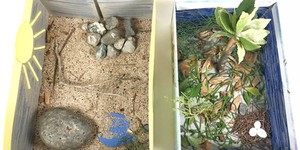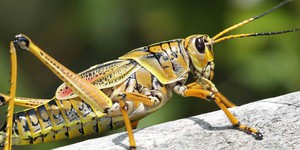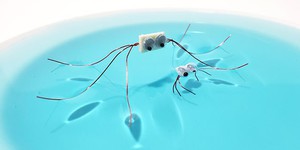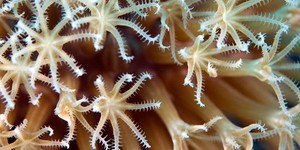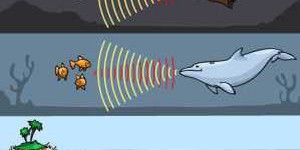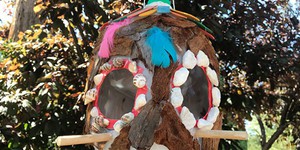Zoology Lesson Plans (16 results)
Animals have developed an amazing variety of body plans, behaviors, and strategies in order to succeed in the struggle for survival. Explore topics ranging from regeneration, camouflage, animal migration, how to attract hummingbirds, and more.
|
Select a resource
Sort by
|
Lesson Plan
Grade: Kindergarten
36 reviews
In this lesson, students play a game. Each classroom corner represents a habitat. After selecting an animal card, students have to move to the matching habitat while acting out the animal displayed on their card. By explaining why they selected a certain habitat, students realize that a habitat is a place that helps an animal survive.
Read more
NGSS Performance Expectations:
Lesson Plan
Grade: Kindergarten-2nd
9 reviews
Get creative with your students in this hands-on lesson plan! Students will use mostly natural materials to build a shoebox habitat that mimics a real-life habitat for an animal of their choice. As they present their miniature habitats to each other, students realize that not all habitats are suitable for all animals. Each animal species needs the resources of a specific habitat to survive.
Read more
NGSS Performance Expectations:
New
Lesson Plan
Grade: 6th-9th
In this lesson plan, students will model the complex biologic manufacturing process. First, they will model the cellular expansion process that occurs in a bioreactor. Then, students will lyse the cells to isolate the proteins from the dyed cell debris. Lastly, they will model the advanced filtration process to purify proteins so they can be used as medicines.
Read more
NGSS Performance Expectations:
Lesson Plan
Grade: 2nd-5th
8 reviews
There are thousands of species of insects in our world, and each are adapted to survive in their habitat. In this activity, students will learn what an insect is and what some of their adaptations are. Then they will put their knowledge into play by "creating" an insect that is adapted to live in their assigned environment.
Read more
Lesson Plan
Grade: 3rd
How do water striders skip across the surface of the water? What advantage does this give them over other insects that helps them survive in their environment? Your students will find out in this lesson as they build their own insects from pieces of wire, and see which ones sink and which ones float.
Read more
NGSS Performance Expectations:
Lesson Plan
Grade: Kindergarten
30 reviews
At some point, many children wish for a pet animal to play with and care for. But what does it take to keep an animal alive and healthy? In this engaging lesson plan, children will act out adopting a pet and shopping for items based on its needs. As they bring their items together, they will notice that every animal needs food, water, shelter, and air to survive.
Read more
NGSS Performance Expectations:
Lesson Plan
Grade: 2nd-6th
5 reviews
By building an edible coral polyp, students will learn the anatomy of coral and be able to explain why corals are animals, rather than plants.
Read more
NGSS Performance Expectations:
Lesson Plan
Grade: 3rd-7th
7 reviews
In this activity, students learn about plant reproduction and use real data to construct explanations about which flowers are the most attractive to different pollinators.
Read more
NGSS Performance Expectations:
Video Lesson
Grade: 3rd-8th
10 reviews
This lesson will introduce students to the scientific method using a fun, hands-on activity about the role of animal camouflage in evolution. During the activity, students will practice each step of the scientific method including doing background research, making a hypothesis, conducting an experiment, analyzing data, and drawing conclusions. By going through this process, students will also learn how camouflage helps animals survive.
Read more
NGSS Performance Expectations:
Lesson Plan
Grade: 6th-8th
Students use ultrasonic sensors and LEGO© MINDSTORMS© EV3 robots to emulate how bats use echolocation to detect obstacles. They measure the robot's reaction times as it senses objects at two distances and with different sensor threshold values, and again after making adjustments to optimize its effectiveness. Like engineers, they gather and graph data to analyze a given design (from the tutorial) and make modifications to the sensor placement and/or threshold…
Read more
NGSS Performance Expectations:
Lesson Plan
Grade: Kindergarten
2 reviews
In this lesson, each student will create a bird feeder from recycled, bird-safe materials. While designing their own bird feeders, students will discuss what basic needs an animal has and how they can meet these needs with the structure they build.
Read more
NGSS Performance Expectations:
|



